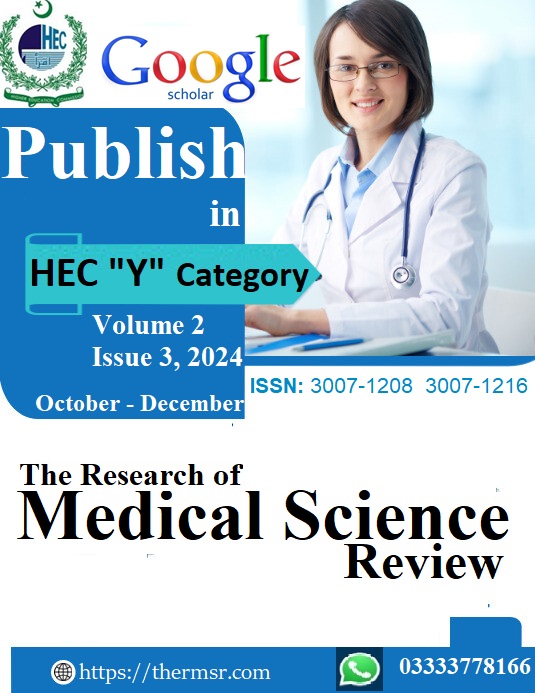COMPARISON BETWEEN ORAL AND INTRAVENOUS HYDRATION IN PATIENTS WITH OLIGOHYDRAMNIOS
Keywords:
Oligohydramnios, Amniotic Fluid Index, Oral Hydration, Intravenous Hydration, PregnancyAbstract
Objective: This study aimed to compare how well oral versus intravenous (IV) hydration helps increase amniotic fluid levels in pregnant women diagnosed with oligohydramnios.
Study Overview: We conducted a prospective observational study to evaluate the effects of these two hydration methods. The research took place in the Gynaecology and Obstetrics Department at Shaikh Zayed Hospital over six months, following approval of synopsis.
Methodology: A total of 70 pregnant women, between 28 and 42 weeks of gestation, were diagnosed with oligohydramnios (defined as an amniotic fluid index, or AFI, of less than 5 cm). These participants were divided into two groups:
- Group A (IV Hydration): Received 2 liters of 5% dextrose water intravenously over 2 hours.
- Group B (Oral Hydration): Drank 2 liters of water over the same period.
AFI was measured before and after hydration using the Phelan technique. Statistical analysis was performed using SPSS version 24, with significance set at p < 0.05.
Results: At the start of the study, the average AFI was 3.9 ± 0.8 cm in the IV group and 4.0 ± 0.7 cm in the oral hydration group. After hydration:
- Group A (IV): AFI increased to 8.2 ± 1.3 cm
- Group B (Oral): AFI increased to 7.9 ± 1.4 cm
The IV group showed a slightly higher increase in AFI (4.3 ± 1.2 cm) compared to the oral hydration group (3.9 ± 1.1 cm), a difference that was statistically significant (p < 0.05).
Conclusion: Both oral and IV hydration are effective in increasing amniotic fluid levels in pregnant women with oligohydramnios. However, IV hydration appears to have a slightly greater impact. More extensive studies are needed to confirm these findings.
Downloads
Downloads
Published
Issue
Section
License

This work is licensed under a Creative Commons Attribution-NonCommercial-NoDerivatives 4.0 International License.














